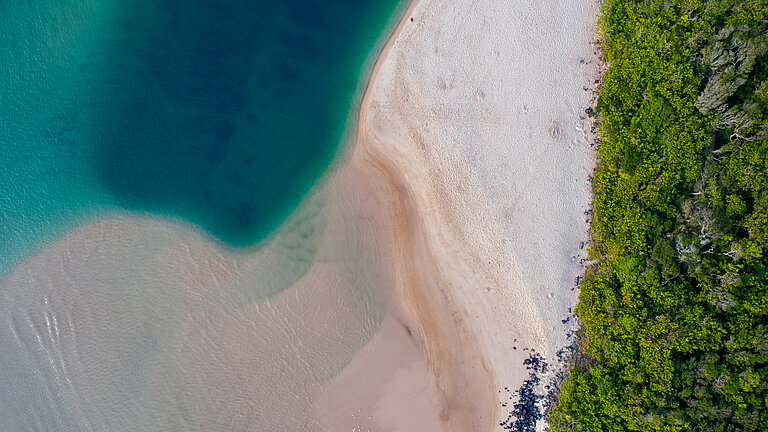New Guide to Carbon Dioxide Removal Decisions
Launch of the CDRatlas Interactive Information Portal
To achieve the goals of the Paris Agreement and limit global warming to well below two degrees Celsius, it is essential to drastically reduce greenhouse gas emissions. For this, it is considered that Carbon dioxide must also be removed from the atmosphere and stored (Carbon Dioxide Removal, CDR). CDR is particularly needed to offset emissions that are difficult to abate, such as those from cement production or waste incineration.
“Thanks to many years of global research and development, we have a wide range of CDR methods to offset these hard-to-abate emissions,” says Dr Steffen Swoboda. “However, up until now the information has not been easily and comprehensively accessible”. Dr Swoboda is a biogeochemist and project leader of the Carbon Removal Atlas (CDRatlas), which has now been launched at the GEOMAR Helmholtz Centre for Ocean Research in Kiel. The project is funded by the German Federal Ministry of Education and Research (BMBF) with approximately 1.7 million euros over three years.
The aim of the project is to visually present current knowledge and potentials of various CDR methods in an easy-to-understand manner. “With the CDRatlas, we want to develop a kind of guide that makes it easier for decision-makers in politics, society and industry to understand and use the potentials and possibilities of carbon dioxide removal,” says Dr Swoboda. “Therefore, we are combining sound scientific knowledge and concepts for possible CDR applications and present them in an interactive and freely accessible information portal”.
Gaps in knowledge or limitations due to current legislation that hinder implementation could also be highlighted by the project. “In addition, the findings will provide an independent and scientifically sound basis for the development of sustainable carbon certificates,” says Swoboda.
The CDRatlas will focus on different approaches for carbon dioxide removal, including both nature-based solutions and technological methods. By visualising the qualitative and quantitative potential, the portal aims to advance the debate on the role of carbon removal.
As an open access platform, the CDRatlas will also foster collaboration and exchange between various stakeholders. “We invite scientists, organisations and authorities to contribute to the success of the CDRatlas by providing data and expertise,” says Dr Swoboda. The data will be visualised through interactive maps, explained through information texts and made permanently accessible via links to repositories. At the start of the CDRatlas project, the researchers will primarily focus on the application of CDR within Europe. In a later project phase, the information portal will then be expanded to cover the entire globe.
Project funding:
The CDRatlas research project, based at the GEOMAR Helmholtz Centre for Ocean Research in Kiel, will run for three years and is funded by the German Federal Ministry of Education and Research (BMBF) with approximately 1.7 million euros.
![[Translate to English:] A group of people in a conference room](/fileadmin/_processed_/c/d/csm_2024-05-30_CDRAtlas-Kick-Off_c_SteffenSwoboda__2__e8ef227586.jpg)
The CDRatlas team and cooperating partners at the kick-off meeting: Jonas Hunfeldt-Häutle, Prof. Dr. Andreas Oschlies, Prof. Dr. Martin Zimmer, Ulrike Bernitt, Dr. Nadine Mengis, Dr. Steffen Swoboda, Claas Faber, Dr. Viola Schaber, Florian Klabes, Stefan Lingner und Dr. Esther Rickert (from left to right). Photo: Christian-Benjamin Sarpey, GEOMAR

Whether on land or in the sea - there are many ways to remove CO2 from the atmosphere and store it. The ‘Carbon Removal Atlas’ project aims to visualise these in a virtual atlas that is easy to understand. Photo: Adobe Stock Media


